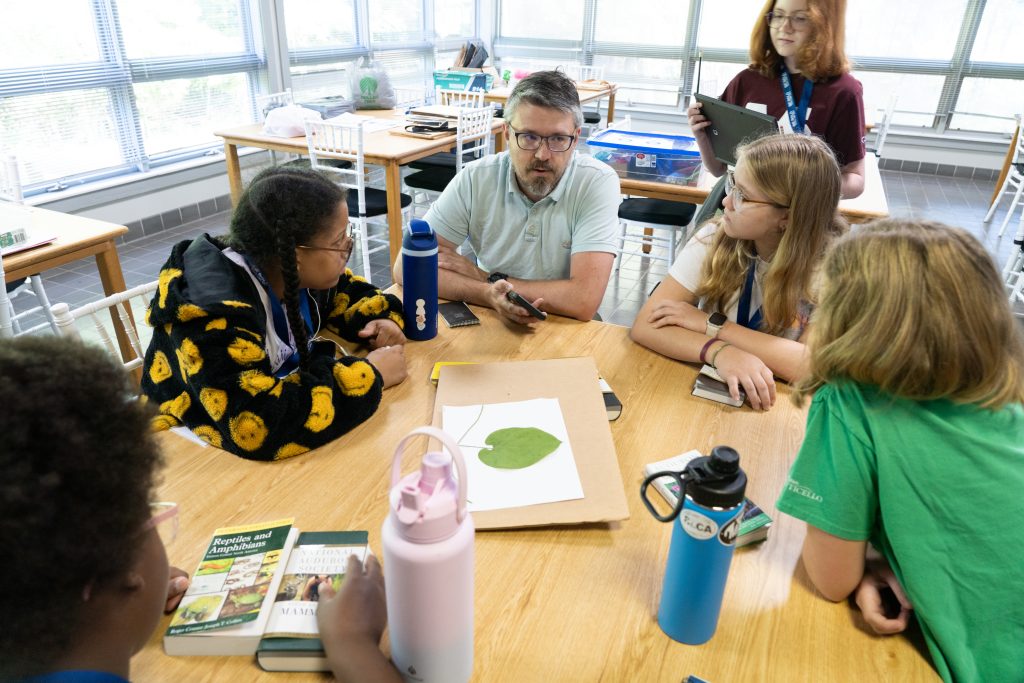W STEM course returns to Plymouth Bluff
Mississippi University for Women’s science department recently returned to Plymouth Bluff Environmental Center with 30 students for the 2024 STEM summer course, June 17-21.

The course, which was for students ages 9-14, included a variety of hands-on activities centered around biology, mathematics, engineering and geology. Some of these included collecting and pressing plants, growing bacteria on a Petri dish, construction of paper straw rockets, identifying different types of rocks and simulating meteorites by throwing marbles and ping pong balls into sand and measuring the impact craters.
“Working with the students and running the program was great! It’s really fun to see the students get excited about the activities and the ‘lightbulb’ moments a student figures something out and the concept clicks,” said Dr. Travis Hagey, assistant professor of biology at The W and one of the organizers of the event.
Other organizers included Dr. Bonnie Oppenheimer, chair of the Department of Sciences and Mathematics; Mr. Michael Dodson, instructor of biology; and Dr. Davida Crossley, associate professor of microbiology; as well as two W undergraduate volunteers, Cain Petty and Zarin Raya.
Last year’s inaugural course was funded through NASA’s NIFTY grant, however, this year was funded through a private donation from Gary and Collene Albright, the latter of which is a W alumna. The plan is for the course to continue.
“There are some logistics to navigate, but we are expecting funding for another five years, so we’re really excited that we can keep providing the course for local kids,” Hagey said.
The course also thrives in an area such as Plymouth Bluff, with access to many different natural teaching tools.
“Using Plymouth Bluff is a precious treasure especially for events like this. Getting to walk trails and talk with the students while they explored the environment was a great experience for me and them. I am glad we have a facility that allows us to explore our world in so many ways from earth science and fossils to astronomy, to plant biology to mathematics and spatial awareness to evolution,” said Dodson.